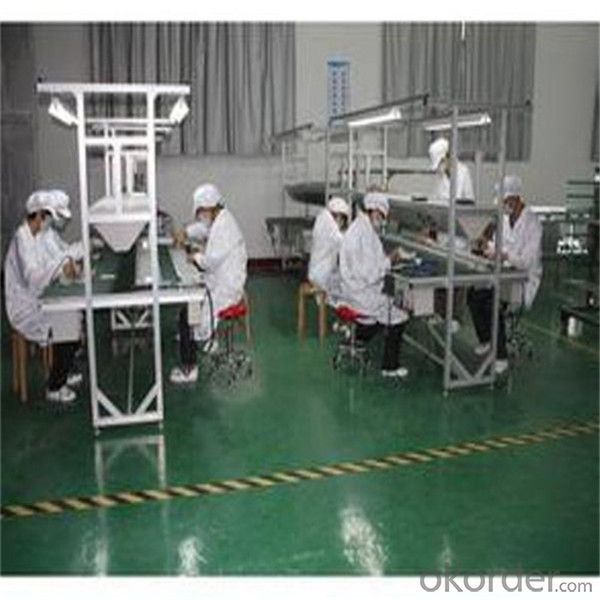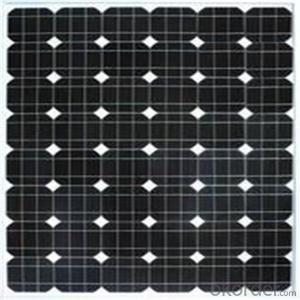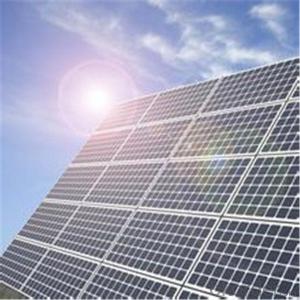High Power 180W Mono Solar Module (GP180MA) Supplied in China
- Loading Port:
- Shanghai
- Payment Terms:
- TT OR LC
- Min Order Qty:
- 1000 watt
- Supply Capability:
- 100000 watt/month
- Option:
- no. of cells: 72 125*125mm
OKorder Service Pledge
OKorder Financial Service
You Might Also Like
Item specifice
Basic Info.
Model NO.: | GP-180P-72 | Material: | Monocrystalline Silicon |
Attribute (E. G.: Size): | Value (E. G.: 12 Inches) | Power: | 180W |
Export Markets: | Global | Trademark: | Gi-Power |
Packing: | Standard Export Packaging | Standard: | TUV; CE; ISO |
Origin: | Guangdong, China | HS Code: | 8541402000 |
Production Capacity: | 70mw/Year |
Product Description
200W/27V solar panel/module for solar power plant.
Quality Ensurance:
1. Excellent A Grade solar cell from Motech or Hanwha solar.
2. Excellent backsheet from SFC, 3M;
3. EVA from Bridgestone / First;
4. Junction box with UL and TUV listed - GZX, IP65;
5. High transmission low iron tempered glass from Xinyi Glass - China Top 1;
6. Solar panels with TUV, CE, ISO9001 certified.
Strong, lightweight aluminum frame design with reinforced sealing and load hold to prevent freezing and warping, and stand against high wind.
Under Standard Test Conditions(STC): Irradiance of 1000W/m2, Am1.5 and 25º C cell temperature
Operating Temperature: -40 ~ +85° C
Storage Temperature: -40 ~ +85° C
Mechanical Characteristics:
Dimensions: 1580mm (L) x808mm (W) x 40mm (H)
Weight: 15.2KG
Polycrystalline 156*156 solar cells: 72 cells
Module Warranty:
Warranty on material and workmanship: Five years
Guaranteed output of 90% after 10 years and 80% after 25 years.
| Performance | ||
| Rated Power[Pmax] | 180W | |
| Power Tolerance | ± 3% | |
| Nominal Voltage | 36V | |
| Design Life | 25 years | |
| Electrical Characteristics | ||
| Maximum Power [Pmax] | 180W± 3% | |
| Maximum Power Voltage [Vmp] | 36.43V± 3% | |
| Maximum Power Current [Imp] | 7.65A± 3% | |
| Short-Circuit Current [Isc] | 8.23A± 3% | |
| Open-Circuit Voltage [Voc] | 43.92V± 3% | |
| Current Temperature Coefficient | 0.08%/º C | |
| Voltage Temperature Coefficient | - 0.32%/º C | |
| Power Temperature Coefficient | -0.38%/º C | |
| Maximum System Voltage | 1000V | |
Company Profile


Business Type: Manufacturer
Main Products: Solar Panel , Solar Module , PV Panel , PV Module , Poly Crystalline Solar Panel , Poly Crystalline Solar Module
Number of Employees: 202
Year of Establishment: 2009-03-26
Management System Certification: ISO 9001
OEM/ODM Availability: Yes
- Q:How do I clean my solar panels?
- To clean your solar panels, start by turning off the system and ensuring the panels are cool to touch. Use a soft brush or sponge with mild detergent mixed in water to gently scrub away any debris or dirt. Rinse the panels with clean water and allow them to dry naturally. Avoid using abrasive materials or harsh chemicals, as they may damage the panels. Additionally, be cautious when working at heights and consider seeking professional help if needed.
- Q:when we say a solar panel has 20% efficiency, do we mean that it converts 20% of sunlight reaching it into electricity or that it converts 20% of visible light(which is only 7% of sunlight) into electricity?
- Sunlight power panels had been the go-to choice for many years. They are among the many oldest, most efficient and most liable methods to produce electrical energy from the solar. Every module is made out of a single silicon crystal, and is more efficient, although more pricey, than the more moderen and less expensive polycrystalline and thin-film PV panel technologies. You can normally appreciate them through their color which is more often than not black or iridescent blue. The silicon crystals have lengthy existence and they may be able to withstand wear and tear with out degrading its workability. Additionally solar is a main source renewable vigour as far as the sunlight method is worried. Sunlight has little influence within the residing creature. So sun panel should be in practice
- Q:If my school was to purchase enough solar panels to run the school off only their power, how much might that cost? (I have a really small school, only 384 kids.)Just general prices of solar panels and how much electricity they yield would be fine too.
- Bravo... okorder /
- Q:It measured volts before I attached it, and after attaching the voltage regulator device, the voltage dropped down to 3 volts, even when just measuring the difference in the solar panels nodes themselves, suggesting that the entire panels voltage dropped and not just the voltage in the regulator. I tried testing it with a power supply of 7 V 0. A and it works fine, but I don't know why it won't work for the solar panel.
- you cannot treat the open circuit voltage of a solar panel like a voltage source (like a battery.) the load response of the panel doesn't behave that way. small panels and panels that are producing less than about .5A are very happy to have their output voltage pulled down to whatever they're connected to (typically zero.) I observed the same phenomenon when i connected a 2V 725mA panel to a 2V 325mA fan -- the open circuit voltage of 5V dropped to 3V when connected to the fan, and returned to 5V when disconnected. The easiest workaround is to use 2V of rechargable batteries in parallel with the panel so that the battery holds the 2V potential difference and the panel just supplies the current. any excess current charges the batteries, so you might consider whether or not you need some type of charge controller to prevent burning the batteries via overcharging. there are actually very few applications of solar panels connected directly to circuits that i have seen that have any kind of robust performance -- if they work at all, they eventually die/burn themselves out in a couple of months. the best robust designs always have a rechargable battery and charge controller somewhere in the power circuitry to buffer the load circuit from the panel. .
- Q:I have to get a lot of information on how solar panels are developed and distributed in America because I have to do two pages on this. Please help me get information in this I really need it!! Thankss...
- The first link below is one of the best sites for recent news about solar panels. You should be able to find stories about solar panels under development today. A little bit of the history: Solar panels have been around for about 50 years now. They were first used to power spacecraft. Solar power for domestic use started to develop rapidly in the 970's during the first oil crisis, but as energy prices fell in the 980's solar development slowed. Most of the large solar panel makers were purchased by large oil companies who seemed not to be too interested in solar. In the late 990's as concerns about both Peak Oil and Global Warming grew there was renewed interest in solar power and a number of new companies were started to develop new kinds of solar panels. Many of these new companies have grown larger than the older solar companies still owned by big oil companies. Over the last 7 years or so growth in the solar market has been explosive with a compound growth rate of almost 40% per year. In 2005 the solar industry for the first time started to consume more silicon than all other electronic industries combined resulting in a world wide silicon shortage that is still with use. New silicon refineries are coming on line and the shortage is expected to diminish by 2008 or 2009. Check out the two links below. They will help you a lot.
- Q:what is a solar panel?
- The term solar panel is best applied to a flat solar thermal collector, such as a solar hot water or air panel used to heat water, air, or otherwise collect solar thermal energy. But 'solar panel' may also refer to a photovoltaic module which is an assembly of solar cells used to generate electricity. In all cases, the panels are typically flat, and are available in various heights and widths. An array is an assembly of solar-thermal panels or photovoltaic (PV) modules; the panels can be connected either in parallel or series depending upon the design objective. Solar panels typically find use in residential, commercial, institutional, and light industrial applications. Solar-thermal panels saw widespread use in Florida and California until the 920's when tank-type water heaters replaced them. A thriving manufacturing business died seemingly overnight. However, solar-thermal panels are still in production, and are common in portions of the world where energy costs, and solar energy availability, are high. Recently there has been a surge toward large scale production of PV modules. In parts of the world with significantly high insolation levels, PV output and their economics are enhanced. PV modules are the primary component of most small-scale solar-electric power generating facilities. Larger facilities, such as solar power plants typically contain an array of reflectors (concentrators), a receiver, and a thermodynamic power cycle, and thus use solar-thermal rather than PV. You could get more information from the link below...
- Q:Can solar panels be installed on the ground?
- Yes, solar panels can be installed on the ground. Ground-mounted solar panels are a popular option for residential, commercial, and utility-scale solar installations. They are typically mounted on racks or frames that are secured to the ground, allowing the panels to capture sunlight and convert it into electricity. Ground-mounted solar panels are often preferred when there is limited roof space or for installations that require optimal positioning and easy maintenance.
- Q:Can solar panels be installed on a theme park or amusement park?
- Yes, solar panels can be installed on a theme park or amusement park. In fact, many theme parks around the world have already installed solar panels to generate clean and renewable energy. This not only helps to reduce their carbon footprint and dependence on fossil fuels but also saves them money on electricity bills in the long run. Additionally, solar panels can be integrated into the design of the park, complementing its aesthetic appeal and showcasing the park's commitment to sustainability.
- Q:i attached a usb charger to my solar panel(it has an output of about .2 volts) but i read on my multimeter its only using about 8 volts however on the conventional wall charger that i use to charge it has an output of about 5. volts.... i believe that my mp3 player is not charging it does not display the charging icon when it is on or off ....is this becuase the output is higher ? do i need to install a volt dropping diode to prevent it from putting to much energy at once? (my mp3 charges fine on the wall charger but does not seem to respond to the solar panel so it the circuits are fine....)
- You description is not clear as to what is supplying and what is consuming the .2, 8, and 5. volts you mention. I get that your solar panel output is .2 VDC (volts DC), but is that open circuit or under load? Also, is the charger output AC or DC? What's using 8 volts? Circuits don't selectively use a portion of the voltage supplied. They use all or nothing. Is the polarity correct from your solar panel to your MP3 player? If your MP3 player requires DC for charging and you're feeding it the correct polarity, but too high a voltage, an overvoltage protection circuit in your MP3 charging circuit might be blocking the charging current from your solar panel. Go through everything again and if you need to post another question on YA, be specific as to what you're measuring, where, and whether it's the source or load you're measuring.
- Q:What are the different types of solar panels?
- There are primarily three types of solar panels: monocrystalline, polycrystalline, and thin-film solar panels. Monocrystalline panels are made of a single crystal structure, making them highly efficient but also more expensive. Polycrystalline panels are made up of multiple crystals and are slightly less efficient but more affordable. Thin-film panels are the least efficient but are flexible and can be used in a variety of applications.
1. Manufacturer Overview |
|
|---|---|
| Location | |
| Year Established | |
| Annual Output Value | |
| Main Markets | |
| Company Certifications | |
2. Manufacturer Certificates |
|
|---|---|
| a) Certification Name | |
| Range | |
| Reference | |
| Validity Period | |
3. Manufacturer Capability |
|
|---|---|
| a)Trade Capacity | |
| Nearest Port | |
| Export Percentage | |
| No.of Employees in Trade Department | |
| Language Spoken: | |
| b)Factory Information | |
| Factory Size: | |
| No. of Production Lines | |
| Contract Manufacturing | |
| Product Price Range | |
Send your message to us
High Power 180W Mono Solar Module (GP180MA) Supplied in China
- Loading Port:
- Shanghai
- Payment Terms:
- TT OR LC
- Min Order Qty:
- 1000 watt
- Supply Capability:
- 100000 watt/month
- Option:
- no. of cells: 72 125*125mm
OKorder Service Pledge
OKorder Financial Service
Similar products
New products
Hot products
Hot Searches
Related keywords






























